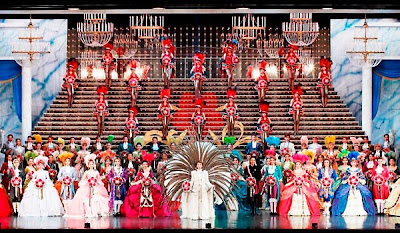Korean Food Adventures
Before I knew anything about Korea, I knew it's food. I started eating Korean food in college, mainly because the suburb of Portland that I lived in then had Japanese and Korean stores and restaurants on every corner. Korean food is amazing and diverse - there are so many interesting dishes and flavors, which vary from region to region, and even though I'd been eating it for years before actually coming to Korea, I feel like I've barely scratched the surface.
For those who've never tried it, don't be intimated to do so: not all Korean food is spicy, though a lot of it is, and while some things are pretty exotic to foreigners, there are plenty of dishes that most westerners would enjoy if they tried them.
Here are some of the fun foods I've encountered since I've arrived:
Haejangguk - "Hangover Soup"
This was one of the first things I tried when I arrived in Korea. The Korean name, Haejangguk literally means "to chase a hangover" and this name can be applied to any soup that is traditionally made as a hangover cure. The version I tried was a very spicy stew made with peppers, onions and pork spinal column. While that last one sounds unappetizing, trust me when I say that it is actually really tasty. The pork is really rich in flavor and so tender it just falls off the bone. But if you can't handle spicy food, then this soup is not for you - if you do have a hangover, it will literally burn the alcohol out of you.
Shabu
So technically the type of shabu I've had so far I think has actually been the Vietnamese style, but because it's so popular here I'm including it on this list. Shabu is basically "hot pot" - you have a pot in the middle of your table with hot broth and you're given lots of fresh vegetables and meat to cook in the pot. This is common in Japan too, but the taste and style here is different. To eat shabu here you start by taking a piece of rice paper (like for making a spring roll) and dip it in some hot water/vinegar.
 |
| The white circular things are the rice paper, and the pan with pink liquid next to it is the water/vinegar mixture |
This makes it soft and a little sticky. You then take some fresh cabbage, bean sprouts, onions, shredded carrot and beets, some of the beef from the hot pot and then add one of the sauces and wrap it all up in the rice paper.
 |
| Making my wrap by adding vegetables, meat and sauce on top of the softened rice paper |
After eating this for awhile, noodles are cooked in the broth, and finally rice and egg are cooked in the pot with the remaining broth to make a porridge. You definitely need to go to shabu with a big group of hungry people.
Japchae
 |
| The Japchae is on the left, with some kimchi and seasoned spinach dishes on the right. In the back you can see the miso and tofu soup we made. |
I recently did a cooking class through the Korean language class at Pohang city hall. They took us to a local restaurant and the ladies that worked there taught us how to make Japchae noodles and a soup that I have sadly forgotten the name of. Japchae is one of my favorite Korean foods: it's made with Korean vermicelli noodles, which are thin, golden colored noodles made from sweet potatoes. It's seasoned with sesame oil, soy sauce, salt and sugar, and topped with shredded egg, fish cake, onions, carrots, and sesame seeds. It's actually very simple to make and something I like to cook at home a lot.
Mandu
One of my other Korean favorites is mandu, or potstickers/dumplings/steamed buns. While Japan has different names for its dumplings - such as gyoza, manjuu, shumai, etc. Koreans seem to call of those things mandu. Some of the ways to eat mandu can be seen below:
 |
| Giant Kimchi and pork stuffed mandu (each one is the size of my fist) |
 |
| Bibim Mandu - small fried mandu on a salad of cabbage and seaweed with spicy sauce |
 |
| Mandu Guk - a soup with mandu, green onions and rice cakes (mochi). Photo from here. |





Comments
Post a Comment